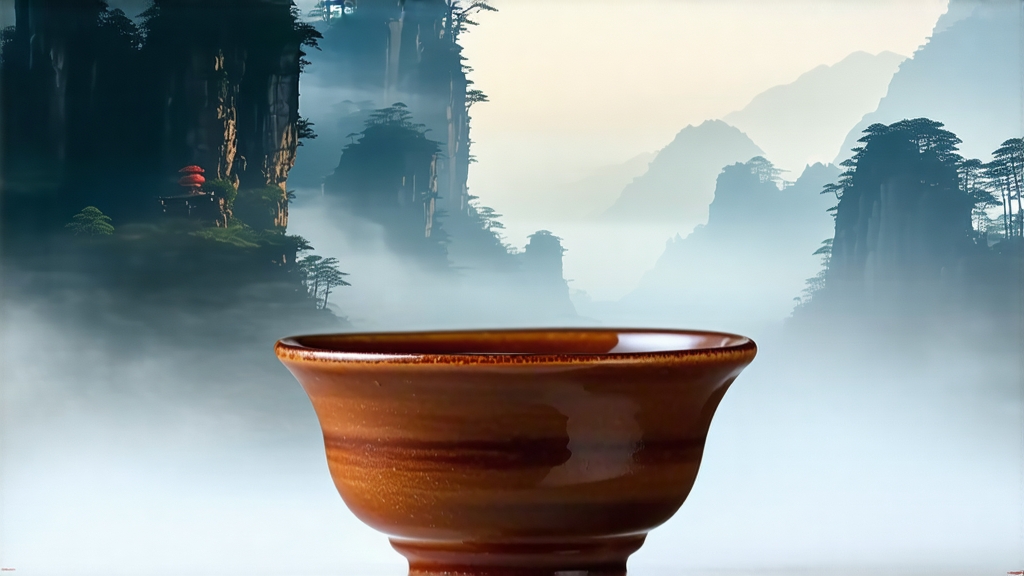
If green tea is China’s springtime whisper and pu-erh its autumnal soliloquy, then Da Hong Pao—Big Red Robe—occupies the twilight hour when cliffs glow ember-red and every sip tastes of stone, fire, and centuries-old secrecy. Nestled in the 36 peaks and 99 ravines of Mount Wuyi, Fujian Province, this flagship rock oolong (yancha) carries a mythology so rich that emperors once sent guards to protect six mother trees, and modern auction houses have bid 30 grams higher than the price of gold. Yet beyond romance and record-breaking price tags lies a living craft that turns Camellia sinensis leaves into liquid mineral music. For the international drinker who has met Tie Guan Yin’s floral aria or Dong Ding’s honeyed hum, Da Hong Pao offers a darker, deeper chord—an invitation to taste the very bones of the mountain.
Historical tapestry
The name first appears in Ming-dynasty stone inscriptions: a scholar, en route to the capital imperial exams, collapses at the foot of Wuyi’s Nine-Dragon Gorge. Monks from the nearby Tianxin Temple brew a strong tea, revive him, and later receive a crimson imperial robe in gratitude. The robe is draped over the tea bushes in blessing; the leaves henceforth wear the honorary “Big Red Robe.” By the Qing era, the six original bushes clinging to Jiulongke cliff were so revered that their yearly harvest—barely 200 g—was couriered to the Forbidden City. When the last emperor abdicated in 1912, the bushes did not retire; instead, grafted offspring marched down the precipices and colonized lower terraces, allowing mortals to finally taste the once-forbidden flavor. Today, “mother-tree Da Hong Pao” is no longer picked (a 2006 government protection order ended that), yet the genetic lineage survives in three authorized clonal varieties: Qidan, Beidou, and Quebei, each claiming a slightly different cliff-side accent.
Terroir: when rock breathes into leaf
UNESCO lists Mount Wuyi as a World Heritage site for its Danxia landform—iron-rich, mineral-saturated cliffs that heat up at dawn and cool rapidly at dusk, creating a diurnal swing of 15 °C. Mist rising from the Jiuqu (Nine-Bend) River condenses on the rock face and drips slowly onto shallow, gravelly soil. Tea roots, forced to struggle, penetrate crevices barely two inches deep, absorbing calcium, potassium, and micro-nickel that later translate into yanyun—the “rock rhyme,” a tactile aftertaste reminiscent of wet slate, river stone, and the faint sweetness of metal. No other oolong growing region can replicate this lithic dialogue; even neighboring Fujianian terraces separated by a single ridge lack the compressed minerality that makes Da Hong Pao instantly identifiable to a trained palate.
Craft: the nine thresholds from leaf to robe
- Plucking: only the middle 3–4 leaves are taken once the spring sun burns off dew, ensuring lignified stems that withstand charcoal torture later.
- Wilting: trays are set on bamboo racks inside a cave-mouth pavilion where mountain breeze reduces moisture to 65 % within two hours; no machine fans are used lest they bruise the leaf lipids.
- Shaking: perhaps the most athletic step. Leaves are tossed vertically in a rattan drum every 20 minutes from 6 p.m. till 2 a.m., activating enzymes that convert catechins into theaflavins and develop orchid-peach aromatics. Masters listen for a rustle compared to “silkworms devouring mulberry.”
- Pan-firing: a 280 °C wok arrests oxidation at 40 %—the halfway house between green and black. One lapse of five seconds turns the batch into charcoal.
- Rolling: cotton cloth wraps the hot leaves into a ball the size of a melon; kneading on a rattan mat twists the cell walls into the characteristic strip-and-bead shape while squeezing out “tea milk,” a sticky sap that will caramelize later.
- First roast: 80 °C for two hours in an electric oven stabilizes shape, yet this is merely rehearsal for the real drama.
- Charcoal roasting: the soul of Da Hong Pao